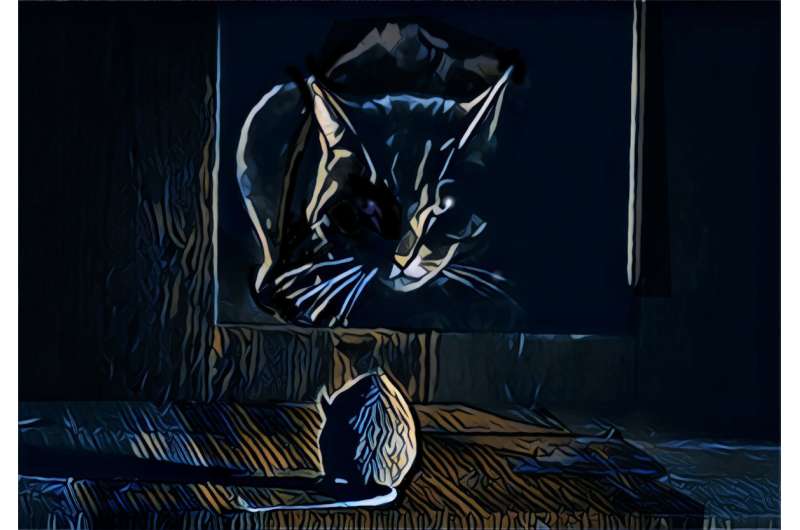The genetic secret of night vision

One of the most remarkable characteristics of the vertebrate eye is its retina. Surprisingly, the sensitive portions of the photoreceptor cells are found on the hind side of the retina, meaning that light needs to travel through living neural tissue before it can be detected. While the origin of the high optical quality of the retina remain largely uninvestigated, it has long been proposed that a peculiar DNA organization would serve to improve vision in nocturnal mammals. Researchers at the Max Planck Institute of Molecular Cell Biology and Genetics in Dresden now showed that the optical quality of the mouse retina increases in the first month after birth that imparts improved visual sensitivity under low light conditions. This improvement is caused by a compact organization of the genetic material in the cell nucleus of rod photoreceptor cells that responsible for dim light vision.
Our retina is an amazing feature of the eye of vertebrates. This light-sensitive layer of tissue is lining the back of the eye-ball and acts as a screen for images projected by the lens. The retina has a thickness of 130 to 500 micrometer and is composed of five layers of dense neural tissue. Since the sensitive portions of the photoreceptor cells are found on the hind side of the retina, light needs to travel through this dense neural tissue to reach the photoreceptors. Researchers suggested that a certain compact arrangement of DNA in the cell nucleus of the rod photoreceptors could improve night vision in nocturnal animals but it remained unclear if and how night vision would benefit from this organization of genetic material.
Scientists around the research group leader Moritz Kreysing at the Max Planck Institute of Molecular Cell Biology and Genetics together with colleagues from the TU Dresden and the Biozentrum at the Ludwig Maximilians Universität in Munich wanted to find out, if and why cells of retinal neural cells are optically special and what the implications for the transparency of the retina are. Transparency in this context means that each rod cell scatters less light, which causes it to be more transparent.
DNA-rearrangement improves transparency
In particular, the researchers focused on the importance of DNA compaction in the rod photoreceptor cells and if changes in the optical properties of the retina are strong enough to improve mouse vision under challenging light conditions. Kaushikaram Subramanian, the first author of the study, explains: "When we studied mice, we found that the optical quality of the retina increases during the first month after birth. There is a 2-fold improvement in the retinal transparency caused by the compact rearrangement of the genetic material in the rod nucleus. With behavioral tests at moonlight intensities, we could also show that mice with this DNA adaptation were able to see better under low light conditions compared to mice that lacked such an arrangement." The mice were ten times better at detecting motions and better see contrasts in dim light.
The research not only demonstrates function for a prominent exception of cell's DNA organisation. The work further shows that image clarity is not only a question of the image projecting lens, but sensitively depends on the optical quality of the retina. Moritz Kreysing, who supervised the study and is also a member of the Center for Systems Biology Dresden, summarizes: "Our study implies that genetics can be used to change optical properties of cells and tissues. It would be exciting to see if genetics can be used to improve transparency of cells and tissues that will immensely benefit biological microscopy, because living tissues could be made transparent to better study them. So far, this is only possible with non-living tissue."
More information: Kaushikaram Subramanian et al. Rod nuclear architecture determines contrast transmission of the retina and behavioral sensitivity in mice, eLife (2019). DOI: 10.7554/eLife.49542
Journal information: eLife
Provided by Max Planck Society




















